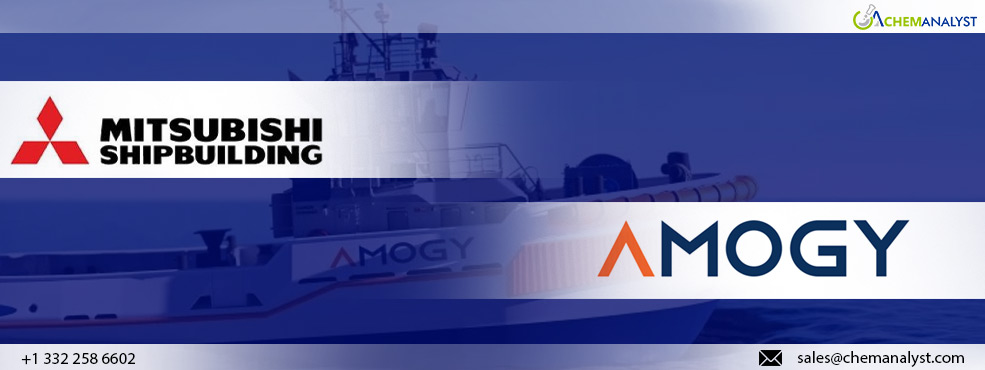Amogy and Mitsubishi Shipbuilding Complete Study on Ammonia-Based Maritime Solutions
- 01-Jul-2024 9:38 PM
- Journalist: Kim Chul Son
Amogy, specializing in advanced, scalable ammonia-to-power solutions, and Mitsubishi Shipbuilding Co., Ltd. (MSB), a division of Mitsubishi Heavy Industries (MHI) Group, have concluded a feasibility study on collaborative onboard hydrogen production and utilization. This study incorporated Amogy’s ammonia-cracking technology alongside Mitsubishi's Ammonia Supply and Safety System (MAmmoSS®).
Amogy and MSB have finalized a Memorandum of Understanding (MoU) to conduct feasibility studies on an ammonia fuel supply system, aligning with the International Maritime Organization's (IMO) goal of achieving net zero greenhouse gas (GHG) emissions in the maritime sector by 2050. The studies focused on assessing the feasibility of two collaboration concept designs: a powertrain integrating ammonia cracking and hydrogen fuel cells for ships, and a hydrogen supply facility to provide pilot fuel for ammonia fuel engines.
Ammonia, known for its carbon-free attributes, has garnered attention as a potential fuel capable of significantly reducing greenhouse gas (GHG) emissions in maritime operations, offering a stable and clean energy source for the future. Amogy has pioneered an innovative system to harness ammonia for electrical power generation, utilizing a process that splits liquid ammonia—known as cracking—into hydrogen and nitrogen. The hydrogen is subsequently supplied to a fuel cell to generate high-performance power. MSB is committed to advancing the decarbonization of the maritime industry and achieving a carbon-neutral society. Through collaborations like this, MSB aims to develop marine ammonia handling systems, including fuel supply systems, to serve a wide range of ammonia-fueled applications, contributing to global environmental sustainability efforts.
Amogy provides carbon-neutral energy solutions designed to reduce emissions in difficult sectors such as maritime, power generation, and heavy industry. Its patented technology for ammonia cracking, validated through practical use, is robust, scalable, and exceptionally efficient in separating liquid ammonia to produce electricity alongside hydrogen fuel cells.
Amogy's headquarters are in Brooklyn, New York, with offices in Houston, Texas, Norway, and Singapore. The company enjoys support from investors such as Amazon’s Climate Pledge Fund, Temasek, SK Innovation, Aramco Ventures, Mitsubishi Corporation, Mitsubishi Heavy Industries, and AP Ventures.
Mitsubishi Heavy Industries (MHI) Group is a global leader across multiple sectors, including energy, smart infrastructure, industrial machinery, aerospace, and defense.
MHI Group integrates advanced technology with extensive expertise to provide innovative, comprehensive solutions that support achieving carbon neutrality, enhancing quality of life, and promoting global safety.
Founded on July 7, 1884, Mitsubishi Heavy Industries (MHI) has a rich history dating back to its establishment on January 11, 1950. As of March 31, 2024, the company's capital stands at 265.6 billion yen. MHI employs 77,697 individuals in its consolidated workforce and 22,538 in its non-consolidated operations. The company operates eight domestic offices, with additional presence in three overseas locations including the Middle East, Taipei, and Kuala Lumpur.



